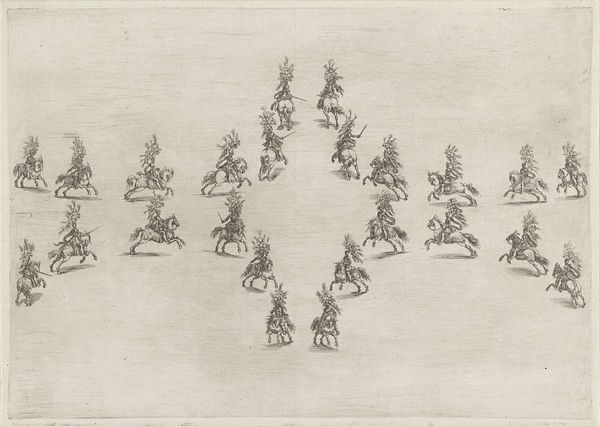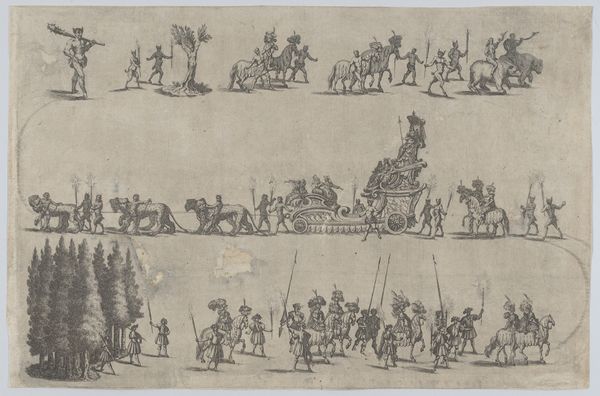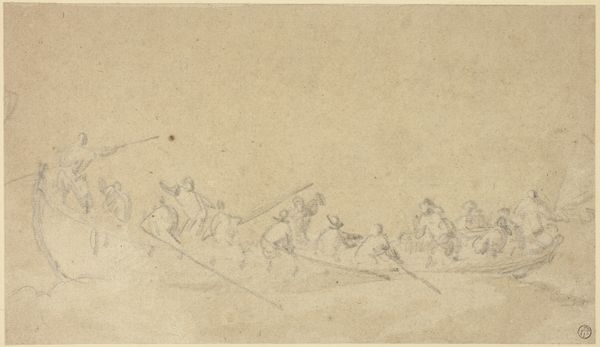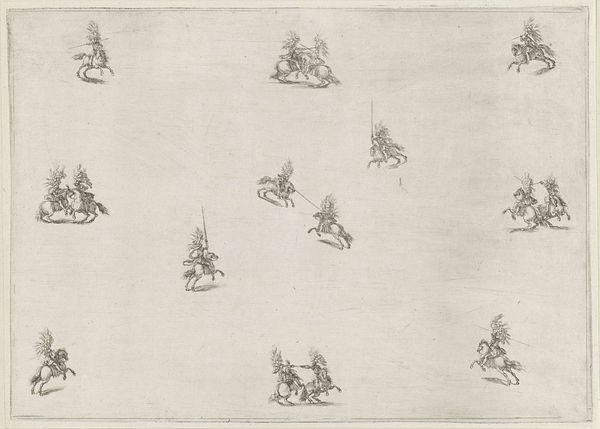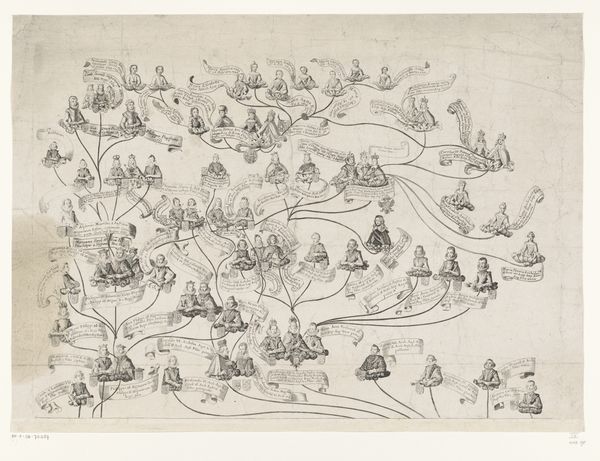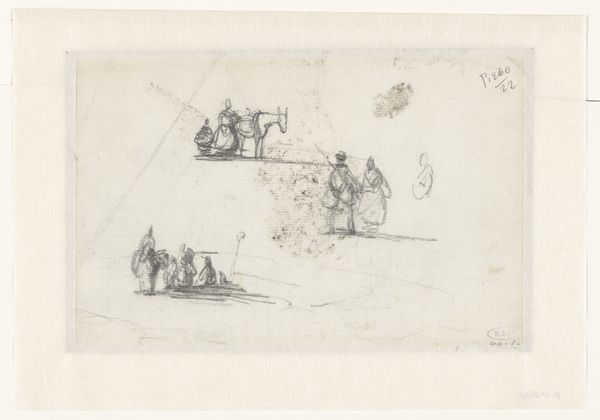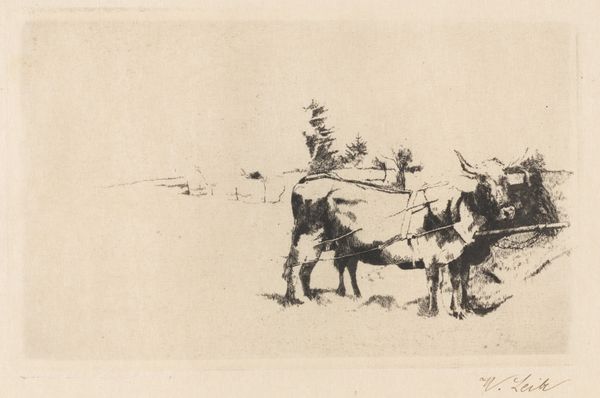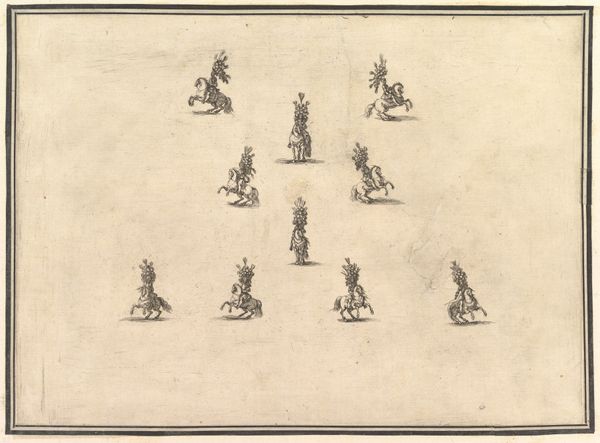
drawing, print, pencil
#
portrait
#
drawing
#
baroque
# print
#
pencil sketch
#
landscape
#
figuration
#
soldier
#
pencil
#
horse
#
history-painting
Dimensions: Sheet: 9 1/8 × 12 5/16 in. (23.1 × 31.2 cm)
Copyright: Public Domain
Editor: This is Stefano della Bella’s "Twenty-four Cavaliers Form a Double S," made in 1652. It’s a pencil drawing, a kind of free-flowing sketch. What’s striking to me is how the figures seem almost choreographed, yet they are placed against nothing. What do you see when you look at it? Curator: For me, this drawing speaks volumes about the performative aspects of power and spectacle in Baroque culture. Consider the socio-political landscape of 17th-century Europe. This wasn’t just about recording twenty-four horsemen; it was about shaping a narrative. Think about courtly life and the rise of absolutism. These events, processions, displays – they were crucial to reinforcing the monarch's authority. How do you see this drawing functioning within those power dynamics? Editor: I guess I hadn't considered that! I was too busy thinking about the ‘S’ shape and the sort of beautiful, strange choreography that shape created. But I see your point. It's definitely more than a simple sketch. So, who would the audience be, then? Curator: Likely, prints of this drawing were circulated amongst the court and other elite circles. This drawing helps construct an image of control and sophistication, both of which are potent forms of political capital. We should remember, imagery had the power to legitimise rulers and shape public perception. Do you agree that this might apply here? Editor: That makes sense! I was caught up in its seeming simplicity, but the ‘S’ shape, the placement of the figures…it’s all very deliberate. Seeing it through the lens of Baroque power structures gives it a whole new dimension. Curator: Exactly! It really brings to light the intent and power of the artwork in Baroque society. Editor: Thanks! I have a much better sense of its place in history now. Curator: You're welcome! It's exciting to view it as an influencer for society during that time!
Comments
No comments
Be the first to comment and join the conversation on the ultimate creative platform.

